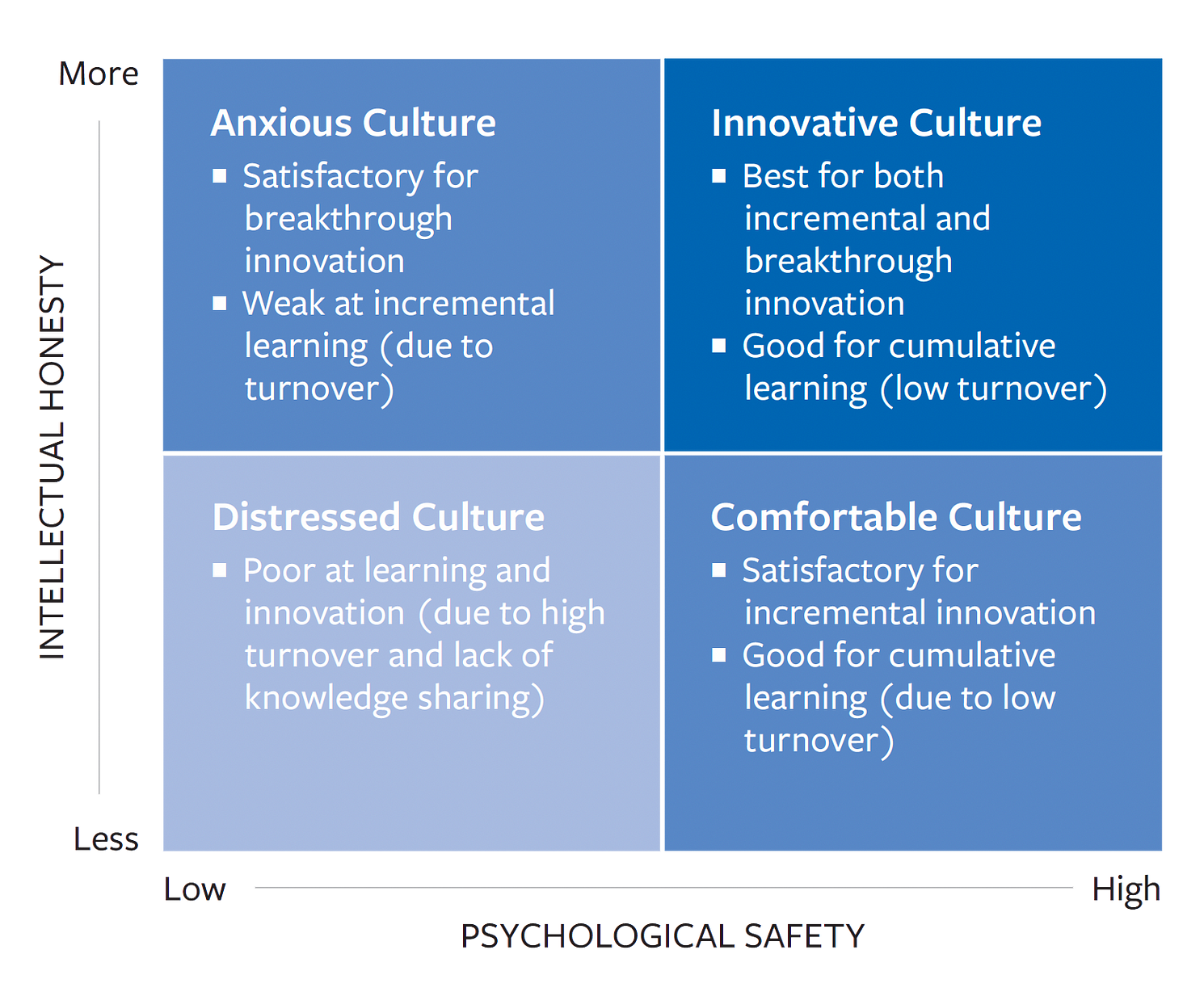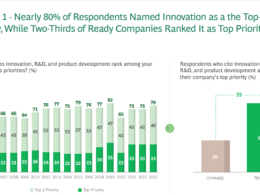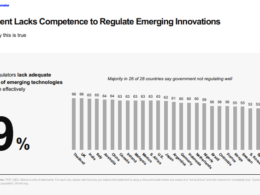health and tech foundation
research and strategy institutes
for continuous health transformation
Joaquim Cardoso MSc
Founder and Chief Researcher & Editor
February 21, 2023
EXECUTIVE SUMMARY
The correlation between intellectual honesty and psychological safety, and their impact on innovation, has been studied by two academics who surveyed over 60 technology start-ups and established companies in a range of industries.
- They discovered that whilst psychological safety can promote learning, too much of it can undermine intellectual honesty, and the reverse is also true.
- To foster a high-performance learning and innovation culture, both elements should be balanced.
The report identified four types of team culture that affect learning and innovation, with distressed team culture, characterised by a low score on both elements, being the least conducive to learning and innovating.
- Distressed Team Culture
- Anxious Team Culture
- Comfortable Team Culture
- Innovative Team Culture
- Leaders can create a healthy team culture that nurtures both intellectual honesty and psychological safety by acknowledging and addressing the vulnerability of distressed team culture.
The article discusses principles for effective intellectual honesty that can help create a team culture that balances candid discussion with respect for individuals, and that encourages intellectual inquiry.
Five Rules to Fast-Track Intellectual Honesty
Leaders can apply these five rules to quickly establish or reinforce a team culture that balances candid discussion with respect for individuals.
- Focus on a common goal
- Expect disagreement, but require respect
- Stick to facts and evidence
- Acknowledge biases, priorities, and knowledge gaps
- Ensure that everyone has a voice
The article also highlights the four principles that are most important to achieving an innovative, high-performance team culture.
- Principle 1: Foster emotional intelligence
- Principle 2: Hire and develop proactive employees
- Principle 3: Legitimize and encourage honesty
- Principle 4: Subordinate egos to unifying goals.
The article emphasizes the importance of fostering emotional intelligence and hiring proactive employees.
Additionally, it highlights the significance of legitimizing and encouraging honesty to promote intellectual honesty.
DEEP DIVE

Why Innovation Depends on Intellectual Honesty
Fostering psychological safety isn’t enough if managers don’t pay particular attention to creating conditions for healthy debate.
MIT Sloan Management Review
Jeff Dyer, Nathan Furr, Curtis Lefrandt, and Taeya Howell
January 17, 2023
The Research
- The authors surveyed teams in more than 60 technology startups and established companies in a variety of industries to understand the interaction between psychological safety and intellectual honesty, and the extent to which they are essential to fostering innovation.
- To measure psychological safety, they used the survey questions developed by Amy Edmondson for her study published in Administrative Science Quarterly.i
- To measure intellectual honesty, they developed questions based on their interviews with dozens of teams, as well as the existing management research on employee voice in organizational change.
Innovation flourishes when people on a team openly debate and disagree.
The question is how to get them to speak their minds, particularly when it means challenging their leaders or acknowledged experts.
Some management experts argue that the best way to get people to speak up is to create psychological safety — an atmosphere described by Harvard professor Amy Edmondson as one in which “people feel accepted and comfortable sharing concerns and mistakes without fear of embarrassment or retribution.” 1
But research also indicates that feeling that it’s safe to dissent isn’t the only important factor for ensuring healthy debate.
In our studies of innovators and their teams, we’ve found there can be a tension that few people recognize between psychological safety and intellectual honesty: that is, a culture in which team members will proactively voice their ideas and disagreements in a rational and constructive way (like the Star Trek character Mr. Spock, but with acknowledgment of their human emotions and biases). 2
Intellectual honesty significantly increases a team’s ability to innovate — particularly to create breakthrough innovations — because it unleashes the knowledge of team members.
We found that many teams prioritize psychological safety without realizing that the social cohesion it promotes, though beneficial to learning, can sometimes undermine intellectual honesty rather than encourage it.
However, when people are brutally honest (Steve Jobs would tell people at Apple that they were “full of s — — — “), they can undermine others’ feelings of acceptance and respect — which are the cornerstones of feeling secure to challenge one’s colleagues.
If leaders can balance psychological safety and intellectual honesty, they gain the benefits of both.
Consider the debate over whether to greenlight the Amazon Kindle in the mid-2000s. Jeff Wilke, then the CEO of Amazon’s retail business, opposed the idea to the point that he challenged Jeff Bezos in a board meeting: Wilke predicted that the company would miss its targets and frustrate customers because it was a software company that lacked experience creating hardware. As Wilke recounts, his comments led to a more thorough discussion of the pros and cons of the decision, during which Bezos conceded Wilke’s points but still argued that Amazon would be better served by developing a new set of skills. “Turns out I was right on everything that I called out, and Jeff was still right to say we should do it,” said Wilke. “[We] created a valuable skill set that we can use to invent new things on behalf of customers.” 3
Wilke reflected that the courage to speak his mind came from one of Amazon’s core management principles:
that leaders are obliged to “have a backbone” and “disagree, even when it is uncomfortable or exhausting,” and to then unite behind whatever decision the team has made, without negative repercussions.
the courage to speak his mind came from one of Amazon’s core management principles:
that leaders are obliged to “have a backbone” and “disagree, even when it is uncomfortable or exhausting,” and to then unite behind whatever decision the team has made, without negative repercussions.
We have found that teams like Amazon’s executive team, which nurtures both psychological safety and intellectual honesty, innovate more successfully than teams in which one culture dominates.
We have identified the factors that are most important to establishing this balance, and below we outline what leaders can do to create a high-performance learning and innovation culture.
We have found that teams like Amazon’s executive team, which nurtures both psychological safety and intellectual honesty, innovate more successfully than teams in which one culture dominates.

Find the Right Balance
Four Innovation Cultures

A company may have a dominant culture; however, teams within a company may have different cultures depending on who runs them and how.
Assessing the culture of a team can help leaders identify its strengths and vulnerabilities and determine any steps needed to improve team performance.
Distressed Team Culture
Teams that score low on both psychological safety and intellectual honesty are poor at learning and innovating. People are unwilling to be honest because they fear — often with good reason — that they will be attacked if they dissent.
A company may have a dominant culture, but teams may have different cultures depending on who runs them and how.
We often find distressed teams in two types of organizations: (1) those where individuals lack emotional intelligence (that is, they are unable to manage their emotions, lack empathy, and behave unpredictably); and (2) where the company itself is under threat and no one, including leaders, is willing to acknowledge it. In such cultures, leaders often demand unrealistically high performance, but employees don’t feel comfortable confronting leaders or each other with their honest concerns.
Low emotional intelligence is a particular problem when leaders are highly insecure or overconfident and can’t admit that they are wrong. A top-level executive with a biotechnology startup described to us a culture in which the CEO publicly disagrees with team members and attacks them personally to discredit them. “Naturally this completely shuts down any desire to express honest disagreement with him,” the executive observed.
A culture of fear and intimidation cost Nokia its edge in the mobile phone market, according to executives and managers who worked there in the late 2000s. Senior leaders pressured managers to perform without revealing the extent of threats from competitors, and they punished anyone who dissented. Employees were afraid to deliver bad news, including that the company’s cellphone strategy was failing. As a result, the company could not keep up as smartphones displaced the older technology that had enabled Nokia to prosper. 4

Anxious Team Culture
Anxious teams score high on intellectual honesty and moderate to low on psychological safety. Team members are encouraged to be brutally honest because it’s better to be right, and win, than it is to be nice.
To return to Steve Jobs: He famously described his approach as being designed to keep “the B players, the bozos, from larding the organization. Only the A players survive.” 5 Just as famously, he cared little for creating social cohesion. Apple’s former chief design officer, Jony Ive, has described a conversation during which Jobs berated him for wanting to be liked by his team at the expense of being completely honest about the quality of their work.
This example illustrates two types of conflict that emerge from intellectual honesty: task conflict and relationship conflict. Task conflict — disagreement about the work — can be highly productive for innovation and team performance. But relationship conflict, which arises when the way someone says or does something makes people feel rejected, is detrimental. 6
Here’s why. On teams that have an anxious culture, people are willing to push one another to learn through disagreement. However, intellectual candor without psychological safety can exact an emotional toll. In interviews, people on teams with an anxious culture told us that they often don’t feel safe or respected. They worry that they are in constant competition with their colleagues and that their value fluctuates with what the group thinks of their current idea.
Because such environments are stressful, anxious cultures have higher turnover rates than psychologically safe cultures do. Ray Dalio, founder of the hedge fund Bridgewater Associates, pushed for radical truth and transparency — and once reported that 25% of new employees left within 18 months. 7 According to one analysis, Tesla, also noted for its blunt culture, loses 27% of its executive team every year, including 44% of leaders who report directly to CEO Elon Musk. 8 Teams with high turnover may gain fresh thinking, but they are less able to retain the lessons learned from the past.

Comfortable Team Culture
A comfortable culture is the opposite of an anxious culture. Comfortable teams score high on psychological safety and moderate to low on intellectual honesty.
Team members in this type of culture often score high on traits like being agreeable and needing to be liked, and low on assertiveness and being proactive. They also tend to have high emotional intelligence and place a high value on attending to social relationships.
Members of comfortable teams feel accepted and respected and even feel safe to speak up — but they choose not to. They may rationalize that being positive and avoiding potential negative conflict is better for morale and the productivity of the team over the long run; they may not care enough about the mission of the team or organization to rock the boat; or they may not believe that leaders will respond to their ideas and concerns, so they don’t bother sharing them.
When Ive decided not to push his team at Apple, it’s unlikely he was afraid of being embarrassed or punished. Rather, he prioritized being positive instead of giving feedback that would have improved the work. Ive nevertheless understood that task conflict can be positive. It’s when teams don’t distinguish between task conflict and relationship conflict that they fail to raise issues and problems that can diminish team performance over time.
Teams with a comfortable culture neither expect nor demand a high degree of candor, nor do they aggressively challenge the status quo. On the positive side, such teams tend to perform consistently and to be good at incremental innovation. Team members work collaboratively and respect one another, which keeps turnover low and allows the team to avoid mistakes that can occur when individuals with important knowledge leave.
On the other hand, they often will not push one another to improve, and as a result, they rarely produce pioneering innovations. When people have no fear of being critiqued, they can become complacent; they may, for instance, offer lazy or poorly conceived ideas because they know it won’t hurt their standing. As one manager at a professional services firm admitted, he felt safe to disagree, but he was not assertive when challenging colleagues’ ideas unless his work was directly affected. “Active disagreement just isn’t part of our culture,” he said.
Meanwhile, according to one study, people in psychologically safe environments tend to be less motivated and don’t work as hard as people who expect their performance to be critiqued. 9 Even Edmondson, who uncovered the connection between psychological safety and innovation, has acknowledged that in some environments where psychological safety is high, “people are so comfortable with each other that they may spend an inappropriate amount of time in casual conversation at the expense of work.” 10

Innovative Team Culture
The most innovative teams over the long term are those that balance psychological safety with intellectual honesty.
Members of innovative teams may think of themselves like the inspiring teacher who pushed them to be their best. They feel safe to speak up when they see things differently, and they willingly push one another to be the best as they pursue common goals. Like those in anxious cultures, they openly debate ideas and take decisive action, but they do so in ways that help team members maintain respect for one another. In contrast to people in distressed cultures, they are able to set aside their egos and change their minds when presented with evidence that favors another viewpoint.
As the CTO for ASML, Martin van den Brink led a decade-long, multibillion-dollar effort to create extreme ultraviolet lithography machines, a technology used to make microchips that will power the next generation of electronic devices.
In the high-performance culture that led to this breakthrough, being wrong was part of the innovation process.
“People who can’t handle the truth can’t admit a mistake, and so they go blindfolded off the cliff,” said Brink. “[This is] much more dangerous and less interesting compared to looking at the cliffs and finding different ways you can approach them, and taking those approaches as a challenge. … So I never pretend I will be right. I just say, ‘This is what I think; tell me the flaw in my thinking.’” 11

Teams may also have a neutral team culture.
They experience a moderate amount of both psychological safety and intellectual honesty.
Consequently, they are not subject to the dangers of the distressed, comfortable, and anxious cultures; nor do they have access to the potential benefits of the innovative, anxious, or comfortable cultures.
Members of neutral teams are not very good at learning or innovation, and they do not have strong social cohesion.
Thus, the neutral team culture has little influence — good or bad — on team members’ satisfaction with their work lives or their innovation performance. (See “Team Innovation Culture Assessment.”)

Principles for Effective Intellectual Honesty
- On an innovative team, members feel respected and supported.
- They learn quickly and easily as they question and challenge one another, acknowledge what they don’t know, and admit mistakes.
- Intellectual inquiry replaces advocacy as the team members pursue truth in an unbiased, rational way rather than jockeying for position.
- Getting there requires simultaneously creating safety while encouraging — even demanding — that team members follow ground rules when they interact. (See “Five Rules to Fast-Track Intellectual Honesty.”)

Five Rules to Fast-Track Intellectual Honesty
Leaders can apply these five rules to quickly establish or reinforce a team culture that balances candid discussion with respect for individuals.
The rules set a baseline for intellectual honesty with some elements of psychological safety in cultures where either is lacking. They can also help leaders to quickly integrate new teams or individuals into an existing culture where psychological safety hasn’t yet developed and open discussion is prized.
- Focus on a common goal
- Expect disagreement, but require respect
- Stick to facts and evidence
- Acknowledge biases, priorities, and knowledge gaps
- Ensure that everyone has a voice
Focus on a common goal. People are more likely to speak candidly when they are committed to working toward a common goal and they know they need one another to achieve it.
Expect disagreement, but require respect. Debate about the work should be actively encouraged, because it helps the team learn and results in better solutions. Leaders can demonstrate how to disagree respectfully — that is, without animosity or negative emotions that damage relationships.
Stick to facts and evidence. Leaders can counter the human tendency for people to insert their emotions and egos into a discussion by insisting on a process (such as the scientific method) for developing answers to questions as a group using verifiable information and logical arguments.
Acknowledge biases, priorities, and knowledge gaps. People may disagree because they have different biases, priorities, or information. When leaders begin an inquiry by being open about the ways in which they might be wrong or uninformed, they set the stage for other team members to challenge their own beliefs and to share what they don’t know. Discussion can then focus on filling the gaps and exploring multiple viewpoints.
Ensure that everyone has a voice. People are more likely to contribute when they believe their ideas and opinions are taken seriously. When leaders wait to share their opinions until everyone else has weighed in, they signal that team members can speak freely. In addition, when leaders listen actively and solicit alternative views, they help all team members feel that their input has value.
We have identified the four principles that are most important to achieving an innovative, high-performance team culture.
The first two relate to the personal characteristics of leaders and team members. The other two address how leaders can encourage intellectual honesty and balance it with psychological safety.
- Principle 1: Foster emotional intelligence
- Principle 2: Hire and develop proactive employees
- Principle 3: Legitimize and encourage honesty
- Principle 4: Subordinate egos to unifying goals.
Principle 1: Foster emotional intelligence.
Emotional intelligence is the mortar that binds psychological safety with intellectual honesty. Leaders need emotional intelligence to create an environment where team members feel comfortable speaking their minds and are valued for doing so. Emotional intelligence includes four main elements: self-awareness (awareness of your emotions), self-management (regulation of your emotions), social awareness (empathy and the ability to see others’ viewpoints), and relationship management (the ability to find common ground and build rapport).
While leaders need to be skilled at all four, social awareness and relationship management are particularly important to encouraging debate without destroying psychological safety. Leaders who can listen with empathy, see others’ perspectives, and defuse conflict by finding common goals are more likely to foster intellectual honesty while preserving safety. They can engage in self-reflection, show humility about how much (or how little) they know, use humor to relieve tense situations, and tell people they are valued.
Developing emotional intelligence among team leaders was so important to Dominic Orr, the former CEO of Aruba Networks, that he often hired psychologists to help his executive team members understand their strengths and weaknesses and develop the confidence to be candid with one another. His goal was to make leaders comfortable with themselves, comfortable with their peers, and confident enough in their own opinions that they were willing to be honest. That’s the only way, according to Orr, that a team can reach the best decision. 12
Principle 2: Hire and develop proactive employees.
Just as teams are unlikely to build psychological safety unless their members have emotional intelligence, they are unlikely to build intellectual honesty unless members are proactive: that is, they show initiative, take action, and persevere to bring about meaningful change. Research shows that personal initiative is the most important individual trait in predicting whether someone will offer their ideas or raise questions. It’s more than twice as important as psychological safety. 13
When Charles Gorintin founded the French company Alan in 2016 with the aim of creating innovative digital offerings for health insurance and health care, he filled the company’s executive ranks with people who were proactive and willing to challenge one another’s ideas. They created a culture in which leaders are encouraged to make decisions swiftly with the best information available — even with only 70% of what they need — and to change course quickly when new information emerges. 14 As Gorintin explained, “It is often better to make the wrong decision, act, and learn how to fix it than wait to make a decision in the first place.”
Principle 3: Legitimize and encourage honesty.
One of the key barriers to honesty is that it is personally risky. Indeed, some research shows that when employees raise problems or concerns about the organization’s practices or processes, they get worse performance evaluations. 15 Team members might need to be convinced that they won’t be punished for being frank.
Organizations can address this challenge through management principles or processes that legitimize and encourage honesty. Wilke, the Amazon executive who challenged the initial idea to build the Kindle, had the benefit of working in an environment that encouraged task conflict. Research also suggests that task conflict within teams leads to more entrepreneurial strategies, more innovation, and higher performance. 16
Principle 4: Subordinate egos to unifying goals.
People are more willing to speak up when they are pursuing goals they care about. When it comes to ensuring intellectual honesty, employees’ feelings of engagement with and responsibility for the team’s or organization’s mission are also more important than psychological safety. 17 “I find that candor emerges when people are committed to the mission and feel dependent on their teammates for getting the mission accomplished,” said Sterling Anderson, a former Tesla executive and founder of Aurora Innovation, a $3 billion startup that sells self-driving vehicle technology. He tells team members to “put your ego in this box by the door” and reminds them that if they disagree with an idea, they need to both offer proof of why it’s wrong and convey to their colleagues that they still trust them. 18 The ability to package disagreement with respect is key to preserving psychological safety while ensuring intellectual honesty. 19

Leaders tend to be overly optimistic that if they’ve created a psychologically safe culture, then intellectual honesty — and hence learning and innovation — will thrive.
Yet psychological safety and intellectual honesty can sometimes work against each other. The challenge for most leaders is to promote candid debate that is focused on the problems the team needs to solve and to defuse interpersonal conflict.
The ability to package disagreement with respect is key to preserving psychological safety while ensuring intellectual honesty.
Balancing psychological safety with intellectual honesty leads to higher performance. Leaders can start by setting aside their egos and inviting scrutiny of their own ideas.
When everyone becomes intellectually honest with themselves, the practice will reinforce itself.
Team members will feel safe to speak freely when revealing biases or being wrong is treated as part of the process for finding the best answers.
That kind of intellectual honesty — candid, but not brutal — may be the missing ingredient that a team needs for innovation to prosper.
About the authors & Affiliations:
- Jeff Dyer is the Horace Beesley Distinguished Professor of Strategy at Brigham Young University.
- Nathan Furr is a professor at INSEAD in Paris.
- Curtis Lefrandt is cofounder and CEO of Innovator’s DNA, a consulting firm.
- Taeya Howell is assistant professor of organizational behavior and human resources management at Brigham Young University.
Dyer and Furr coauthored The Innovator’s Method (Harvard Business Review Press, 2014) and, along with Lefrandt, coauthored Innovation Capital (Harvard Business Review Press, 2019).
References
See the original publication
Originally published at https://sloanreview.mit.edu on January 17, 2023.












